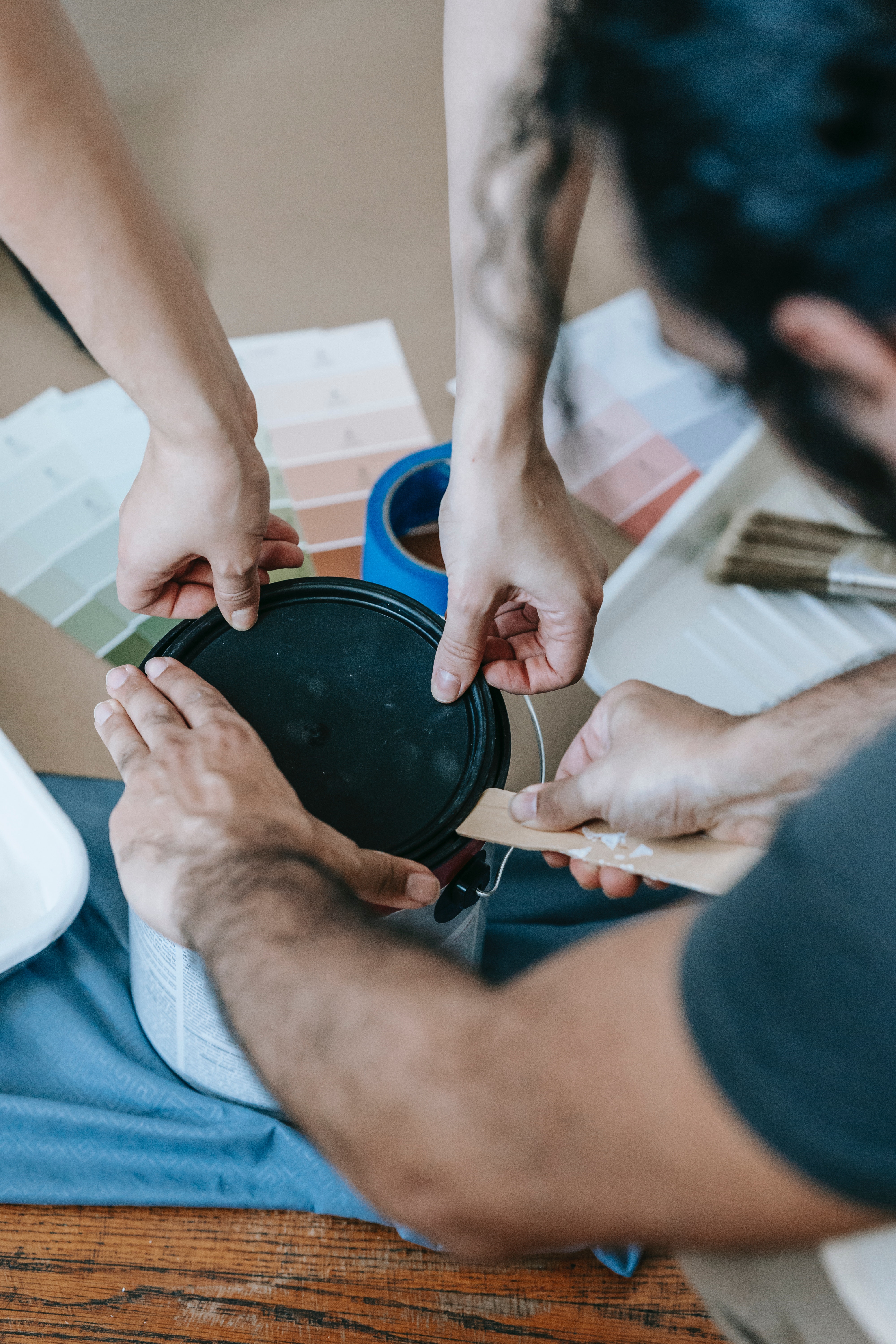How to make decorating easier

Although new homes represent a blank canvas, redecorating them isn’t something to rush into. It takes around a year for plasterboard to fully dry out, while any new dwelling settles into place and small settlement cracks occasionally appear along internal walls. Once twelve months has elapsed, any cracks should be lightly replastered prior to undertaking any decorating work.
Before rushing out to a DIY store and filling a trolley with wallpaper, it’s important to approach decorating with caution. Fools rush in where angels fear to tread paint into the carpet. Failing to prepare usually lengthens the time required to finish a job, lowering its overall quality and increasing your stress levels. Below, we’ve compiled a series of tips which should simplify any decorating project, whether it’s minor or all-encompassing…
Protection (for the home)
Look around the space you’ll be decorating and consider what might get damaged in the process. If you’re going to be hammering in nails to hang new pictures, take old ones down so vibrations don’t knock them off. If you’re going to replaster the ceiling, cover furniture and floors with dust sheets. If you’re going to paint skirting boards, apply masking tape along the edges of carpets. You should also cover or protect sockets, switches, handles and fabrics.
Protection (for you)
We mentioned treading paint into carpets earlier, and this staple of television comedy is best avoided by wearing old footwear to ensure you don’t end up with paint, paste or other liquids between your toes. Keep old newspaper handy to wipe your feet on, as well. Latex gloves reduce allergic reactions to the chemicals in many decorating products, and a dust mask is advisable when sanding wood. If power tools are involved, keep a first aid kit nearby, too.
Take ‘before’ photographs
If a painting used to hang dead centre on a wall, don’t assume you’ll be able to reposition it from memory once you’ve wallpapered over its nail hole. It’s remarkable how often we misremember things we’ve lived with every day. ‘Before’ photos provide a useful guide to how a room was furnished or configured. Take pictures of key measurements – a tape measure shot showing a picture frame stood 18 inches below the ceiling, for instance.
Choose materials carefully
Financial savings often prove to be false economies. A cheap paint might require three coats, whereas a quality one-coat product should live up to its name and save time. Check wallpaper rolls come from the same batch to avoid colour mismatches; replace supplied plastic rawl plugs with metal ones for more secure installation of wall-mounted objects like curtain rails; and select washable or wipeable wallcoverings if you have kids or pets.
Optimise your conditions
Wherever possible, ensure children are out of the house, and lock pets in another room for their own safety. Work in daylight so you can see clearly, since artificial light hides shade disparities and makes it hard to see where new paint has been applied. Keep windows open to maximise airflow and disperse any chemical aromas. Always proceed in a set direction, ideally finishing off beside the door you’ll be leaving through.
Don’t overdo it
Decorating becomes much harder if you’re tired or stressed, and the quality of any finish will suffer. Don’t set overly ambitious targets and then end up working into the evening to complete them. Stay hydrated and take regular breaks, periodically refocusing your eyes to mitigate against headaches. Accept it may take more than one day to complete a job to the best standards you can manage; wallpaper paste and paint won’t lose any viscosity overnight.
Back to Latest Posts




